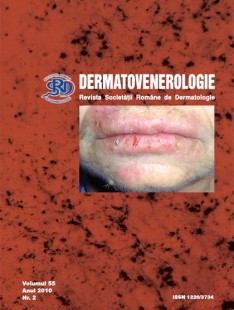General reviews
Skin hydration
Skin hydration (hydration of the horny layer of the epidermis) became a concern in the ‘50s [2, 3]. The factors that influence the water content of the horny layer are the natural moisturizing factors (NMF), hyaluronic acid, aquaporin 3 (AQP3), epidermal lipids, surface hydrolipid film, etc.
Various methods are used in order to evaluate the hydration level of the horny layer: direct methods (infrared spectroscopy or Fourier-tranform infrared spectroscopy and nuclear magnetic resonance spectroscopy); indirect methods (electrical and mechanical), as well as the measurement of transepidermal water loss (TEWL) are used.
Dry skin, with rugged aspect and fissures, has a diminished barrier function, TEWL rate being increased.
The dry aspect of the skin is either gained or constitutional (nonpathologic or pathologic).
The treatment of dry skin depends on its nonpathologic or pathologic origin. Nonspecific measures include
avoiding excessive washing and protection against external agents. Specific measures include the use of syndet-type hygiene produscts (synthetic detergents), and of care and treatment cosmetics such as humectants, filmogenic (occlusive) products, oils rich in polyunsaturated fatty acids (PUFA), lyotropic substances, etc.
The available skin hydration products are usually combinations of moisturizers, occlusives and emollients.


